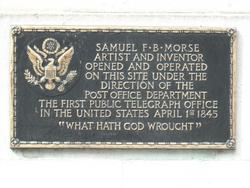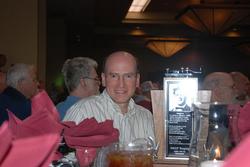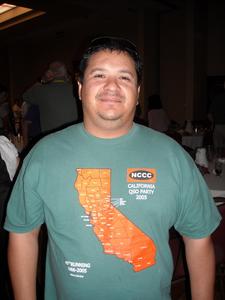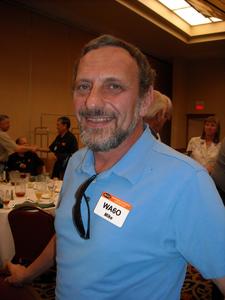 April 29, 2009 Editor: Ward Silver, NØAX | ||||||
IN THIS ISSUE
NEW HF OPERATORS - THINGS TO DO What's capable of being done from a mobile HF setup? This would be the weekend to find out -- there's a nationwide mobile contest, two regional QSO parties, and the Indiana QSO Party. You should have no trouble getting a representative sample! BULLETINS No bulletins in this issue. BUSTED QSOS A golden issue last time! CONTEST SUMMARY Complete information for all contests follows the Conversation section May 2-3
May 9-10
NEWS, PRESS RELEASES, AND GENERAL INTEREST At last! The Contesting Compendium is up and running - a wiki on radiosport! Created by N4ZR, KM3T, K5TR, K5ZD, and N5KO, the objective is, "to make this into a one-stop source for information on contesting, and to ensure that all the good stuff that is now scattered across the Internet doesn't succumb to the ravages of time, hard drive failures, or other accidents of history." Here are the instructions for Reading and Browsing as well as How to Contribute. Carl K9LA has agreed to be the site's Propagation editor - you'll recognize him as a former NCJ editor, too. More information is available in this contesting.com article. Well done, you guys. (Thanks, Pete N4ZR)
Long in the writing and researching, tower-climbing, antenna-raising maven Steve K7LXC announces the publication of his how-to book on towers and antennas. It's called "Up the Tower - The Complete Guide to Tower Construction" and you can pre-order a copy from Steve's Champion Radio Web site for delivery in May. The book's 35 chapters and 220+ pages distill what Steve has learned from working on more than 200 amateur towers and dozens of commercial sites! Fear not, competitive copiers, Alex KU1CW affirms that the annual Kansas City DX Club CW Pileup Contest will take place as usual on Saturday (May 16) night from 8 PM until midnight at the KCDXC hospitality suite in Room 525 at Crowne Plaza Hotel. There will only be PC logging and judging this year so buff up those typing skills! Glenn K6NA turned up this bit of solar news -- that the International Sunspot Number for 2009 is now below 1.00, the first time that's happened since before 1913! Let's just hope ol' Sol is backing up to make a really vigorous run at the next maximum. And if not, lets put that 15 meter satellite allocation to work! Come to think of it, there's a 40 meter satellite allocation we've never tried, either. The latest Contest Visualizer (based on the WA7BNM perpetual contest calendar) is available for download from Bob KØRC. This Excel 2003 spreadsheet-based tool will show you all of the 2009 contests in a graphic display and will reveal the overlapping times of these events. It also performs UTC to Local time conversion for your convenience. Scott N3FJP has updated five of his contest logging programs to include the Cabrillo file EMAIL tag, These new versions will be a great help to new contesters in getting their logs submitted and their call signs in the results. The new versions of the programs support the CQ WW DX and WW DX Network, CQ 160 Meter, and CQ WPX and WPX Network contests. (Thanks, Randy K5ZD) Antenna manufacturer Force 12 has a new Web site up and running after the company changing hands over the past few months. It appears to be well-organized and has a complete listing of their product line. (Thanks, Jim N2EA) Starting this year the Grupo Argentino de Radiotelegrafía - GACW will replace the traditional Key Day and Competencia Radiotelegráfica Argentina by the "Raid Radiotelegráfico del GACW" - the GACW Radiotelegraphic Raid - on July 18th and 19th. This "raid" will be a GACW Members and CW operators HF bands meeting to encourage the use of CW mode world wide. 30 hours of CW operating to encourage proficiency in CW. (Thanks, Alberto LU1DZ)
Well, just who can you believe if you can't trust roadside markers? Diane NH6HE spotted this story about a purported geographical goof that just happens to affect a very well-known grid corner. Or does it? Web Site of the Week - With so many Internet-savvy prospective hams, it just makes sense to provide guidance to becoming a ham in a form they know and enjoy. For example, this "How To Become a Ham Radio Operator" wiki spotted by Glenn K6NA on the Wired Web site. It's simple at the moment, but I'm sure it will grow as more material is added. WORD TO THE WISE 90 Minutes - that's reported to be the length of a human's natural REM-sleep cycle. By arranging your sleep times to be about 90 minutes long, you'll wake up more refreshed than waking up part way through. SIGHTS AND SOUNDS
The Northern California Contest Club sponsored a Contest Academy on April 17th, the first day of the Visalia convention. It was well-attended and the students came away happy as you can see in this photo album by Rob K6RB. These events are catching on! (Thanks, Steve K6AW) Perhaps this is where the Rover of the Future is headed? Wearable sensors and user interface devices work together for truly mobile personal computing in this video from the TED site as Media Lab researcher Patti Meas demos her "Sixth Sense". (Thanks, Jim WØFF) Hmmm...there seems to be some Morse code in this video...what could it be? What does the cat want? Is it sending Morris Code? Bill AA4XT thought contesters might enjoy these pictures of the construction of his 'Big Bertha' tower from a few years ago. Uh, yeah, although now I feel strangely inadequate. (Thanks also, Scott KA9FOX) RESULTS AND RECORDS Here's an exceptional record -- the 2008 CQWW contests had over 10,000 logs submitted for the first time ever! Aside from Field Day, which as we all know is not a contest, this is the largest ham radio contest of all time. Sunspots? We don' need no steenking sunspots! (Thanks, Mike K9NW) And one more record - turning 35 years old on November 15, 2009 AO-7 (a.k.a "OSCAR 7") still carries lots of amateur satellite traffic after spontaneously reanimating itself some months ago. Joe, K3SZH says Igor UA9CS has now logged over 6000 QSOs via the ancient bird. (From the AMSAT ANS-109 bulleting, ANS thanks Tim, N3TL and Joe, K3SZH for the above information.) OPERATING TIP County abbreviations are your multipliers in state and regional QSO parties, so be sure to use the right ones. Don't make up your own abbreviations because the log checkers (or the log checker's software) might not recognize them in your log. The contest sponsors almost always publish a list of their recommended abbreviations on the contest Web site - download that list and print it out for easy reference. TECHNICAL TOPICS AND INFORMATION Would you like to see the source of that big signal heard on the low bands from the recent VK9GMW DXpedition? George AA7JV kindly posted "The VK9GMW Spider-Pole Antenna" - an article describing their design and how to use it on land. (Although it would be more fun to use it from the location pictured on the first page of the article.)
IEEE Communications Magazine for March 2009 featured the article "Cognitive Radio as a Mechanism to Manage Front-End Linearity and Dynamic Range" by Preston Marshall. The process involves the selection of filtering (preselectors) and antenna beam-forming to reduce receiver input energy and transmitter power requirements. This is termed "Dynamic Spectrum Allocation" which is just what hams have been doing since the days of Marconi. As the most frequency-agile service, the techniques developed by hams should be fertile ground for SDR and cognitive radio researchers. Three great ham-friendly projects appeared on the Instructables Web site this week. First up is a set of instructions on sharpening your drill bits using a drill sharpening guide. This always seems like such a good idea, but doing it right is not trivial. Then, for very little expense, a multiple-output bench power supply can be yours by converting an ATX power supply from an old PC. Finally, who could resist an article about making things out of those metal Altoid project-boxes, er, candy tins? Here's a tip for VHF+ contesters, if you can't find an antenna for 2 meters and up, you can scrape one together using a pair of TV rabbit ears. Add a balun and you have an amazingly flexible portable dipole that covers 2 meters through 70 cm. This would be great for hiking or any kind of emergency use, as well. (Thanks, Jessie KB7PSG) Silver plating a tank circuit coil looks swell, but does it accomplish anything, efficiency-wise? Not at all on HF and just a little on VHF and up. And then there's silver-plating and there's silver-plating. The moonbouncers are always squeezing the last dB out of everything, so this discussion about plating from Moon-Net and a set of tests by Larry WØQE makes good reading! (Thanks, Gary ZL2IFB) Can you use J-B Weld epoxy in strong RF fields? According to numerous reports, while you can't roller skate in a buffalo herd, you can use J-B Weld to fix (and even build) antenna parts. It claims "liquid steel" as an ingredient, but it is non-conductive and is apparently not lossy, either. Another Web site to have in your folder of Technical Reference bookmarks is this compendium of connector pin-outs. I used to have a little pocket book of connector info, but this is 10 dB better. (Thanks, Dave N2NL) Les W2LK turned up an on-line version of the AB-105 tower instruction manual. There is a LOT of this heavy-duty tower out there holding up amateur antennas. Another on-line resource has been provided by David K2DBK as he has posted a scanned version of a classic 1966 Coaxial Connector Handbook by Jim Fisk W1HTY. Much of that material is still useful today. The story about Brazilian CB'ers using US military "Fleetcomm" satellites for handy communications has gotten a lot of press. This story, "The Great Brazilian Sat-Hack Crackdown", features Adinei PY2ADN, discussing the preferred method of frequency-doubling an inexpensive 2-meter FM rig to access the transponder (and presumably the use of a down-converter, as well). His links include a great site on VHF+ satellite communications of all sorts.
Technical Web Site of the Week - I am sorry to report that "Twelfth Wave" is not one of Shakespeare's plays - it refers to a transmission-line impedance-matching technique called "synchronous transformers". For example, matching 75-ohm cable to 50-ohm cable requires only two 1/12th-wavelength sections of 50- and 75-ohm cable. No non-standard cable impedances are required, as would be the case for a quarter-wave synchronous transformer. The technique is explained thoroughly in the June 1997 QST article, "Try a Twelfth-Wave Transformer", by Darrel Emerson, AA7FV, with follow-up discussion on his Web site. Remember that QST articles through 2005 are available on-line to ARRL members! (Thanks, Dan N3OX) CONVERSATION Guts and Coffee While hotel-bound not long ago, I got a chance to watch a bit of the 2009 edition of Pro Bowling Tour. (Whatever happened to the invisible person who long-ago kept score in such beautifully-formed characters?) One of the competitors, Jason Belmonte, was using the new two-handed style and doing rather well, getting a LOT of extra spin on the ball and, as bowlers will tell you, a resulting dramatic increase in the much sought-after "pin action". As it turns out, he was the tournament winner. Not entirely unlike the introduction of Single-Op Two-Radio (SO2R) operating, this SBTH (Single-Bowler Two-Hands) style has struck a bit of a nerve amongst pin pounders across the land. Shifting gears from the oiled wooden lanes to the blacktop fast lanes, the article "Cycling Enters the Electronic Age With a New Gear-Shifting System" describes a new electronic gear system. Making its debut in the Tour of California, "traditionalists worry that it may erode the basic tenets of the sport." Does this sound familiar? I moderated a Contest Forum at the recent International DX Convention in Visalia, CA with panelists K1DG, W6OAT, F6BEE, and N6TV. Before opening the floor for questions, I asked the panelists their opinions on dealing with remote stations, changes to categories or rules, and the effect of CW Skimmer after a busy contest season. Technology specifics aside, the consensus was that the sky is not falling and operator skill still rules the roost. This is the sense I get from the contest community at large, as well. Certainly, technology has made the sport something different than it once was. But the sport seems to be fairly resilient, adjusting itself to deal with new things inside and outside the shack. Self-spotting on the spotting network? Publish a list of IP addresses from which the spot was made! Packet pileups too hard to handle? Change frequency and start another pileup! Too many operators relying on databases of exchange information? Send something else this year! The reaction time seems to be about six months before counter-measures are deployed. And always, it comes back to operator skill. Can you copy what is sent? Can you dig heavily-accented phonetics out of a pileup at high rate? Do you know when to expect that 30-minute long-path opening to difficult zones? Do you know when to use a high antenna and when to switch to a lower one? How's that "sixth sense" of when a warbly high-latitude multiplier is calling off the side of the beam? Can you keep your butt in the chair, stay awake, and operate alertly and accurately to turn those hours of operating into a score higher than the next operator? Although CW Skimmer seems to be on the verge of obsoleting the mult operator, the sport seems pretty healthy. CQ WW took in more than 10,000 logs for the 2008 contest and that's with no sunspots. None! Watch the Top Ten boxes and the best operators are still coming out on top. Gadgetry will only confer an advantage temporarily. Then the good operators will adapt and - what do you know? - still come out on top. So the lesson is? The Top Ten isn't a place you get to solely through the pages of a ham radio catalog. Get good and stay good at basic radio skills because "guts and coffee" (thanks, Jim N6TJ) will probably will still count for something in the contest seasons for a long time to come. CONTESTS 29 April to 12 May An expanded, downloadable version of QST's Contest Corral in PDF format is available. Check the sponsor's Web site for information on operating time restrictions and other instructions. HF CONTESTS MARAC CW and SSB Contests--Phone,CW, from May 2, 0000Z to May 3, 2400Z. Bands (MHz): 3.5-28, 50-432, Frequencies: 3.550, 7.050, 14.050, 21.050, 28.050. Exchange: RS(T), state, county abbreviation. Logs due: Jun 7. Rules 10-10 Spring CW & Digital Contests--CW,Digital, from May 2, 0001Z to May 3, 2359Z. Bands (MHz): 28. Exchange: Call sign, name, 10-10 number, state. Logs due: 15 days. Rules 7th Area QSO Party--Phone,CW,Digital, from May 2, 1300Z to May 3, 0700Z. Bands (MHz): 1.8-28, 50,144, Frequencies: CW--40 kHz above band edge; SSB--1.845, 3.855, 7.235, 14.255, 21.355, 28.455. Exchange: State and county code. Logs due: Jun 5. Rules IPA Contest--Phone,CW, from May 2 1400Z to May 2, 2000Z and May 3, 1400Z to May 3 2000Z. Bands (MHz): 3.5-28. Exchange: RS(T), serial, and IPA or state. Logs due: Jun 30. Rules Portuguese Navy Day--Phone,CW,Digital, from May 2, 1500Z to May 3, 1500Z. Bands (MHz): 3.5-28. Exchange: RS(T), serial. Logs due: Jun 1. Rules Indiana QSO Party--Phone,CW, from May 2, 1600Z to May 3, 0400Z. Bands (MHz): 1.8-28. Frequencies: CW--1.805 and 40 kHz above the band edge on 80-10 meters, SSB--1.845, 3.850, 7.230, 14.250, 21.300, 28.450. Exchange: RS(T) + S/P or IN county, DX RS(T) only. Logs due: Jun 15. Rules Radio Club of America QSO Party--Phone, from May 2, 1700Z to May 3, 0459Z. Bands (MHz): 3.5-21. Exchange: RS, QTH, name, equipment. Rules ARI International DX Contest--Phone,CW,Digital, from May 2, 2000Z to May 3, 1959Z. Bands (MHz): 1.8-28. Exchange: RS(T), serial or Italian province. Logs due: 30 days. Rules New England QSO Party--Phone,CW,Digital, from May 2, 2000Z to May 3, 0500Z and May 3, 1300Z to May 3, 2400Z. Bands (MHz): 3.5-28. Frequencies: CW--3.540, 7.035, 14.040, 21.040, 28.040; SSB--3.850, 7.280, 14.280, 21.380, 28.380. Exchange: RS(T) and S/P or New England county. Logs due: 30 days. Rules Armed Forces Comm'ns Test--Phone,Digital, from May 9, 1200Z to May 10, 2400Z. Bands (MHz): 1.8-28. Frequencies: See Web site for specific station schedules. Exchange: RS(T). Logs due: no logs. Rules CQ-M International DX Contest--Phone,CW, from May 9 1200Z to May 10, 1200Z. Bands (MHz): 1.8-28. Exchange: RS(T) and serial. Logs due: 30 days. Rules Alessandro Volta RTTY DX Contest--Digital, from May 9, 1200Z to May 10, 1200Z. Bands (MHz): 3.5-28. Exchange: RST, serial, CQ zone. Logs due: Jun 30. Rules FISTS Spring Sprint--CW, from May 9, 1700Z to May 9, 2100Z. Bands (MHz): 3.5-28. Exchange: RS(T), S/P/C, name, FISTS nr or power. Logs due: 30 days. Rules Nevada QSO Party--Phone,CW,Digital, from May 9, 1700Z to May 9, 1700Z. Bands (MHz): 1.8-28, 50, Frequencies: CW--15 kHz and SSB 25 kHz above General band edge. Exchange: RS(T) and S/P/C or NV county. Logs due: Jun 15. Rules VHF+ CONTESTS Microwave Spring Sprint--Phone,CW,Digital, from May 2, 6 AM to May 2, 1 PM. Bands (MHz): 902+. Exchange: Grid Square (6-character preferred). Logs due: 14 days. Rules 2GHz and Up World Wide Contest--Phone,CW,Digital, from May 2, 6 AM to May 3, 8 PM. Bands (MHz): 2.4G+. Exchange: 6-char grid locator. Logs due: 60 days. Rules EU EME Contest--Phone,CW, from May 2, 0000Z to May 3, 2400Z. Bands (MHz): 2.3, 3.4G. Exchange: TMO/RS(T) and "R". Logs due: 12 days. Rules MARAC CW and SSB Contests--Phone,CW, from May 2, 0000Z to May 3, 2400Z. Bands (MHz): 3.5-28, 50-432, Frequencies: 3.550, 7.050, 14.050, 21.050, 28.050. Exchange: RS(T), state, county abbreviation. Logs due: Jun 7. Rules 7th Area QSO Party--Phone,CW,Digital, from May 2, 1300Z to May 3, 0700Z. Bands (MHz): 1.8-28, 50,144, Frequencies: CW--40 kHz above band edge; SSB--1.845, 3.855, 7.235, 14.255, 21.355, 28.455. Exchange: State and county code. Logs due: Jun 5. Rules Nevada QSO Party--Phone,CW,Digital, from May 9, 1700Z to May 9, 1700Z. Bands (MHz): 1.8-28, 50, Frequencies: CW--15 kHz and SSB 25 kHz above General band edge. Exchange: RS(T) and S/P/C or NV county. Logs due: Jun 15. Rules 50 MHz Spring Sprint--Phone,CW,Digital, from May 9, 2300Z to May 10, 0300Z. Bands (MHz): 50. Exchange: Grid Square (6-character preferred). Logs due: 14 days. Rules LOG DUE DATES 29 April to 12 May April 29 - 222 MHz Spring Sprint, email logs to: springsprintlogs@gmail.com, paper logs and diskettes to: 2009 Spring Sprints, c/o Chuck Towner, W9KQJ, PO BOX 73, PALATINE, IL 60078-0073, USA. Rules April 30 - Oklahoma QSO Party, email logs to: logs@okdxa.org, paper logs and diskettes to: Oklahoma QSO Party, OK DX Association, P.O. Box 2591, Claremore, OK 74018-2591, USA. Rules April 30 - RSGB 80m Club Championship, Data, email logs to: ccdata.logs@rsgbhfcc.org, upload log at: http://www.vhfcc.org/cgi-bin/hfenter.pl, paper logs and diskettes to: (none). Rules April 30 - SP DX Contest, email logs to: spdxc-logs@pzk.org.pl, paper logs and diskettes to: Polski Zwiazek Krotkofalowcow, SPDX Contest Committee, P. O. Box 320, 00-950 WARSZAWA, POLAND. Rules April 30 - URE 60th Anniversary Contest, email logs to: 60aniversario@ure.es, paper logs and diskettes to: (none). Rules May 1 - North Dakota QSO Party, email logs to: K0LN@srt.com, paper logs and diskettes to: NDRA, c/o Lynn Nelson, K0LN, 6940 4th St. SW, Minot, ND 58701, USA. Rules May 1 - Feld Hell Sprint, email logs to: (none), post log summary at: http://www.bambinomusical.com/autolog.html, paper logs and diskettes to: (none). Rules May 1 - BARTG HF RTTY Contest, email logs to: ska@bartg.org.uk, paper logs and diskettes to: (none). Rules May 1 - CQ WW WPX Contest, SSB, email logs to: ssb@cqwpx.com, paper logs and diskettes to: SSB WPX Contest, CQ Magazine, 25 Newbridge Rd, Suite 405, Hicksville NY 11801, USA. Rules May 1 - Radio Maritime Day, email logs to: F6DGU@cyberelec.fr, paper logs and diskettes to: (none). Rules May 3 - UBA Spring Contest, SSB, email logs to: ubaspring@uba.be, paper logs and diskettes to: Michel Gertis, ON4CAQ, Mommestraat 69, B-3550 Heusden Zolder, Belgium. Rules May 3 - EU Spring Sprint, SSB, email logs to: eusprint@kkn.net, paper logs and diskettes to: Hrvoje Horvat, 9A6XX, 25 Rujan 4, HR-52000 Pazin, Croatia. Rules May 4 - LZ Open 40m Sprint Contest, email logs to: LZ1GL@yahoo.com, paper logs and diskettes to: LZ Open 40m Sprint Contest, P.O. Box 830, Sofia 1000, Bulgaria. Rules May 5 - Missouri QSO Party, email logs to: moqp@w0ma.org, paper logs and diskettes to: K2DP, S. David Propper, 7488 Cornell Ave., University City, MO 63130, USA. Rules May 5 - ARCI Spring QSO Party, email logs to: va3jff@yahoo.ca, paper logs and diskettes to: ARCI Spring QSO Party, c/o Jeff Hetherington, VA3JFF, 139 Elizabeth St. W., Welland, Ontario L3C 4M3, Canada. Rules May 5 - QCWA Spring QSO Party, email logs to: w2od@aol.com, paper logs and diskettes to: W2OD, Robert Buus, 8 Donner Street, HOLMDEL N.J. 07733-2004, USA. Rules May 7 - Russian DX Contest, email logs to: rdxc@srr.ru, paper logs and diskettes to: Russian DX Contest, P.O. Box 88, 119311 Moscow, Russia. Rules May 8 - 432 MHz Spring Sprint, email logs to: springsprintlogs@gmail.com, paper logs and diskettes to: 2009 Spring Sprints, c/o Chuck Towner, W9KQJ, PO BOX 73, PALATINE, IL 60078-0073, USA. Rules May 10 - Yuri Gagarin International DX Contest, email logs to: gc09@qst.ru, paper logs and diskettes to: GC Contest Committee, P.O.Box 2020, Moscow, 101000, Russia. Rules May 11 - PODXS 070 Club PSK 31 Flavors Contest, email logs to: pskflavors@excite.com, paper logs and diskettes to: (none). Rules ACKNOWLEDGEMENTS ARRL Contest Update wishes to acknowledge information from WA7BNM's Contest Calendar and SM3CER's Contest Calendar. | ||||||
.jpg)










